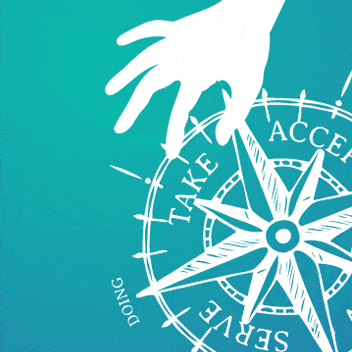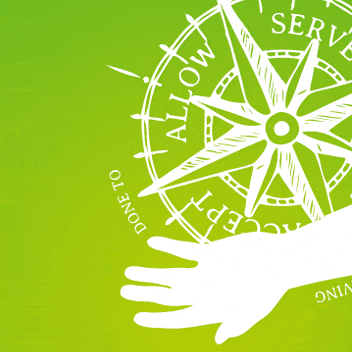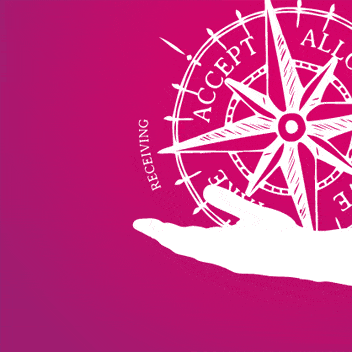
Overwhelmed? Learn your Want from your Willing
How many times have you complained that you ‘have to’ do something? Or felt overwhelmed by commitments or expectations?
Feeling obliged is something very familiar to most of us. From birth we’ve been conditioned to put up with, endure, or allow things we don’t want. And it can leave us feeling stressed or even angry if it builds up unchecked.
Many of us find it hard to say ‘no’. So we end up agreeing to things, and then feeling resentful. But as useful as those two words ‘yes’ or ‘no’ can be, they’re not quite the whole story when it comes to ways to counteract getting overwhelmed.
We’ve talked about ‘have to’. But what about ‘want to’, and ‘willing to’?
Very often when we feel a ‘have to’ it’s because we’ve made a commitment or agreement to do something without fully considering how we feel about it beforehand. Or because we haven’t checked in with ourselves as the situation unfolds – until it’s too late.
Making an agreement is not quite the same thing as saying ‘yes’. Even if you agree to something there are still a couple of different ways you could feel about it. You could…
Want to:
You feel this when it’s something you actively desire for your own benefit.
“I’ve been on my feet all day and they’re so sore – I’d really like it if you could give them a rub.”
Now, the other person might be delighted to be asked to rub your feet – because it’s their favourite thing to do. Your want doesn’t have to be at the expense of someone else. But it’s something that’s really important to you to prioritise, and it’s essentially for you, not them.
If foot-rubs are not the other person’s go-to activity they might decide that they’re…
Willing to:
This is when you’re prepared to put your own immediate desire aside for the benefit of someone else.
“Sure, I’ll give you a foot rub – I’d probably prefer to give you a cuddle, but I’m willing to put that desire aside because I love you and your feet are sore”.
The key is that you’re willing to do it with an open heart, as a gift for the other person, rather than as a way to build up currency with them.
Figure out who it’s for – who’s getting the gift?
When you choose your ‘want to’, you’re essentially receiving a gift – either you’re getting to do something you want, or someone is doing something for you that you want.
When you choose your ‘willing to’ (and you do it with an open heart) you’re giving someone else the gift of getting to do or experience something they want for themselves.
Check your willingness scale
Getting clearer and more conscious about your ‘want to’ and ‘willing to’ when you make decisions can be helpful in many ways, particularly when you begin to understand your own willingness scale.
Noticing the shifts between ‘want to’ and ‘willing to’ can provide a good early warning system for avoiding getting overwhelmed. Pay attention to when something you thought was for you (want to) no longer feels like it’s for you, but you’re still OK to keep going (willing to). And then notice if your levels of ‘willing to’ decrease. Is there a point where you notice that level become too low for you to feel comfortable (‘have to’)?
Equally, don’t forget: as much as it’s great to get something you want, ‘willing to’ can also be a great place to learn from. If you’re willing to you can experience something wonderful that you might not have thought of for yourself.
Here’s a simple exercise to try each day, to train your ‘want to’/’willing to’ muscles:
- Start each day by making a list of the things you want from the day (this might be details of things you want to do, or have happen; or as simple as how you want to feel).
- At the end of the day make another list. Include the things that happened during the day that you felt willing to do, or allow. And also write down anything that felt like a ‘have to’. Check this list against your one from the morning. See how many of your ‘want to’s you achieved, and how they balanced out against the ‘willing to’s and the ‘have to’s.
Just noticing the patterns is a great first step in getting more conscious about them. Once you can see these lists in black and white you can start to figure out how you need to adjust your decision-making. Making changes, based on how you really feel (as opposed to what you ‘ought to’ or ‘should’ feel) is what is most likely to lead to feeling less overwhelmed, and more comfortable with your interactions.
If you want to learn this and more life-skills, for healthy choice-making and relationships, come and join me at one of my workshops. Or find workshops worldwide at the School Of Consent.
The quadrants
Each quadrant in the Wheel Of Consent creates a different experience and teaches you something different about yourself. Learn more about each one:
Enjoyed reading this?
If you've found this page helpful you can get more tips and resources for better relating straight to your inbox. Sign up here and get my free How To Be Heard guide to start you off:
Explore more:
A simple approach to consent and boundaries
If you feel overwhelmed by the idea of consent and boundaries here are some simple things to focus on which will make it easier to understand.
Read MoreWhy are we so scared of talking in the bedroom?
Talking in the bedroom is often viewed as ‘dirty’ or avoided completely. Find out why it’s time to change that narrative.
Read MoreGiving and receiving explained – 6 key ways to tell the difference
If you think giving and receiving don’t need to be explained you might be surprised by this handy guide that breaks down the differences
Read MoreEvents & courses
Healthy Relationships with the Wheel Of Consent – Glastonbury
29 – 30 Nov, Glastonbury. This 2-day ‘hands-on’ introductory workshop teaches you the essentials of the Wheel Of Consent as a practical tool to create healthy relationships.
Read MoreLearn To Touch – Supported Self Study Course
Online. Discover a whole new approach to touch that will change how you feel – literally! A short, affordable, practical guide you can learn in less than an hour a day.
Read More








